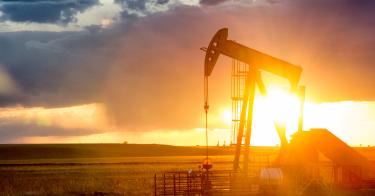America’s oil and gas production is like Super Bowl MVP Patrick Mahomes. Defies expectations. Continually amazes. Sets new records. Makes a lot of people very happy.
Within the past decade, the United States has seen remarkable benefits as a result of the shale revolution. Fueled by innovation and American entrepreneurial grit, the U.S. surpassed Russia as the world’s largest gas producer in 2011 and eclipsed Saudi Arabia as the world’s largest oil producer in 2018.
According to a 2019 report by the president’s Council of Economic Advisers, natural gas production has increased nearly eightfold since 2007, while oil production has increased nineteenfold.
For the average American, that means lower energy bills, job growth across the country, and a healthier economy.
The Council of Economic Advisers found that increased production has saved U.S. consumers nearly $203 billion annually, which averages out to approximately $2,500 for the average family of four.
These energy cost reductions are an especially huge boost to lower-income households, who spend a large percentage of their income keeping the lights on.
According to the Council of Economic Advisers, the poorest one-fifth of U.S. households have been able to keep 6.8% of their annual income as a result of shale revolution energy savings.
Many jobs have been created to take advantage of the increased production, as well. These jobs cover industries including transportation and drilling. Researchers James Feyrer, Erin T. Mansur, and Bruce Sacerdote project that nearly 640,000 jobs have been created as a result the country’s energy boom.
Additionally, Timothy Komarek of Old Dominion University found that counties in the Marcellus shale—covering Pennsylvania, West Virginia, and Ohio—saw wages increase by 6.6% since 2007.
America’s energy revolution isn’t just about the oil and gas companies. Far from it. We all benefit because increased supplies lower prices, increase economic prosperity, and shield consumers from supply disruptions that have occurred around the world.
And the service industry is thriving, too. One barber in Texas is pulling in more than $180,000 a year by taking his mobile barbershop to remote oil fields.
Fortunately for Americans, most of the shale resources fall under private and state-owned lands, as opposed to land and mineral rights that the federal government owns and controls. Effective state management has allowed for rapid expansion while maintaining a strong environmental record.
State and local governments are more accountable than the federal government to the people, who will directly benefit from an efficient permitting process and environmental stewardship. That makes it more likely that natural resources will be developed to create jobs and grow the economy, while protecting the environment.
To its credit, the federal government is doing its part for the natural resources under its control. Prior to the Trump administration, the average Interior Department environmental-impact statement time frame was 5.25 years and was 1,485 pages long. Over the course of the Trump administration, Interior cut it down to 15 months and 151 pages.
The Interior Department also cut the average time frame for an environmental assessment from the Bureau of Land Management down from one year to three months.
Increased paperwork and longer environmental reviews are hardly a measure for stronger environmental protection. This isn’t about balancing economic growth and environmental protection. It’s ensuring we have both.
President Donald Trump touted America’s energy dominance during his State of the Union address Tuesday night, reminding the nation that the U.S. is firmly in the No.1 position when it comes to global oil and gas production.
As Trump mentioned, U.S. production is hitting numbers no one thought was possible three years ago. Certainly, no one thought it was possible a decade ago.
As Axios’ Amy Harder wrote, the 2010s were “the decade that blew up energy predictions.” Ten years ago, the U.S. Energy Information Administration projected America would produce 6 million barrels of oil per day. To the benefit of hardworking families and businesses across the country, we’ve more than doubled it.
For the first time in nearly 70 years, America is a net energy exporter and could be in that position well into the future.
No one fully knows what the 2020s will bring, because energy markets are unpredictable. But just like for Mahomes, the Super Bowl-winning Kansas City Chiefs’ quarterback, the future looks bright.
This piece originally appeared in The Daily Signal




